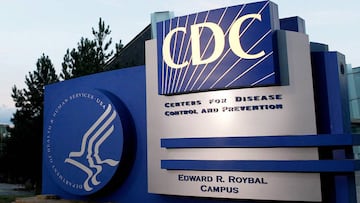HEALTH
What is Neisseria meningitidis, the increasing bacteria that causes meningitis according to the CDC
The recent rise in Neisseria meningitidis cases highlights the importance of vaccination at a time when many Americans doubt their ability.

The Centers for Disease Control and Prevention (CDC) has recently issued a warning about a rise in cases of a specific type of meningitis caused by the bacteria Neisseria meningitidis. This bacterium, though not new, appears to be on the rise in certain populations, prompting concern from health officials.
Also known as the meningococcus, Neisseria meningitidis is a bacterium that can cause serious infections, including meningitis and septicemia (bloodstream infection). It lives harmlessly in the back of the nose and throat of about 1 in 10 people without causing any illness. However, in some cases, the bacteria can invade the bloodstream and cause severe illness.
As of March 25, 2024, 143 cases have been reported for the current calendar year, an increase of 62 cases over the 81 reported as of this date in 2023. Nearly 1 in 5 who contract the disease has died.
Why the increase in cases?
There are several strains of Neisseria meningitidis, identified by different serogroups (A, B, C, W, X, and Y). These serogroups are responsible for varying degrees of illness worldwide. In the United States, serogroups B, C, and Y are the most common culprits. The recent rise in Neisseria meningitidis cases, particularly the serogroup Y strain, is concerning for public health officials.
The CDC has identified some groups with a higher risk of contracting meningococcal disease:
- Adults between 30 and 60 years old (65%)
- African-Americans (63%)
- People living with HIV (15%)
Symptoms and treatment
Meningitis caused by Neisseria meningitidis can develop rapidly. Early symptoms may resemble the flu, with fever, headache, and nausea. However, the hallmark signs of meningitis, like a stiff neck, confusion, and sensitivity to light, can quickly emerge. Septicemia can cause chills, fatigue, and a characteristic rash.
Prompt medical attention is crucial for suspected cases of meningococcal meningitis. Early diagnosis and antibiotic treatment can significantly improve outcomes. In severe cases, hospitalisation and intensive care might be necessary.
Vaccination remains the most effective way to prevent meningococcal disease. Several vaccines are available in the United States, targeting different serogroups of Neisseria meningitidis.






